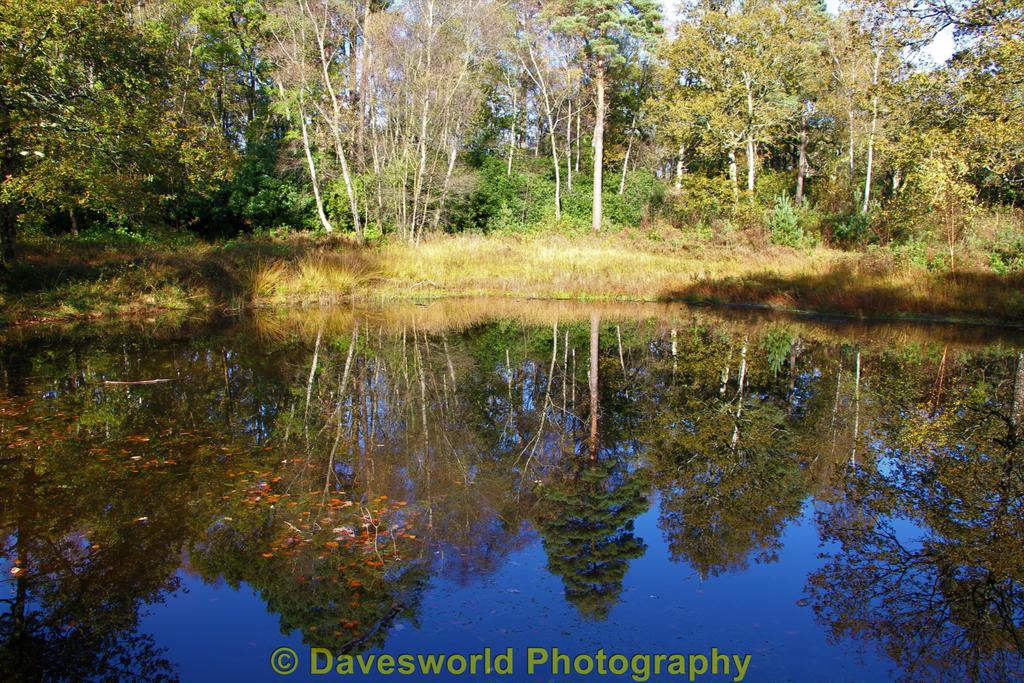Post by Dave on Nov 8, 2017 15:16:18 GMT
Stover Park Nature Reserve 8th November 2017
I have still not got used to having to work on Saturdays with a day off in the week. Today was the first ever Wednesday I have had off and I was determined not to waste the day at home. I woke up to a very cold and frosty morning but soon the sun came out and my mind was made up I was going out to enjoy it.
It is a good number of years since I last visited Stover Country Park and what better place to spend a few hours walking. It is cheap to park in the woodland car park and there is nothing else to pay out, so it really is worth visiting.
Stover Country Park contains over 114 acres of woodland, heathland, grassland, lake and marsh and a substantial variety of wildlife. You can just walk around the lake, or go on many of the other walking routes that all flat and easy to do.
I love autumn for its beautiful colours and today I was able to capture some of the softest colours and contrasts along with a wonderful shot of Britain’s favourite bird the Red Robin.
I really thought I was going to miss covering football matches on Saturdays, yes I do but I am so loving going out and using the camera to take shots of nature and this great area we all call home.
History
Stover Country Park comprises part of the 80,000-acre estate acquired by James Templer, a Devonian entrepreneur, in the late Eighteenth Century. Templer replaced the old house, Stoford Lodge, and in 1777 built himself a large mansion house in the Palladian style which he named Stover House. He undertook a landscaping scheme to form the gardens of the house, which significantly influenced the appearance of the area. It included the construction of Stover Lake, which covers approximately 4.05 hectares (10 acres), with water originally entering from the Ventiford Brook. The works included the planting of exotic trees and shrubs and the construction of a 1.5 mile carriage drive. Also to be included in the Templers’ legacy to the area is the Stover Canal, which runs from Jetty Marsh, Newton Abbot to nearby Ventiford, and the Haytor Granite Tramway (combined they form much of the Templer Way).
The Stover estate remained in the Templer family until 1829 when it was sold to Edward Adolphus Seymour, the eleventh Duke of Somerset. The gatehouse (which is now a Grade II listed building) was added to the start of the carriage drive at this time. In 1842 James Veitch, the illustrious Devon plantsman and landscaper, advised the Duke of Somerset of improvements that might be made to the grounds of Stover. Among his advice was that some land still needed draining, in certain places walks and grassy glades could be introduced and some of the ‘tall, naked laurels’ cut back. He also suggested that some groups of rhododendrons be planted. Seymour maintained Stover as his principle residence in the County and it remained wholly in that family until the death of the grandson of the twelfth Duke of Somerset in 1927. However, some of the Stover estate was sold off prior to this in 1921. Since 1932 Stover House has been the location for the privately run Stover School, standing just outside the boundary of the Park.
The Country Park is historically part of the Bovey Heath, an expanse of wet boggy lowland heath, which covered the majority of the Bovey Basin. Following the decline and sale of the estate in the 1930’s the site was bought by the Forestry Commission and stands of Scots pine, Norway spruce, Douglas fir, western hemlock, Sitka spruce and larch were subsequently planted. The Country Park is now owned and administered by Devon County Council having been purchased in 1979 from the Forestry Commission.
The Country Park was designated a Site of Special Scientific Interest in 1984 by the Nature Conservancy Council (now English Nature) due to its rare dragonfly species and invertebrates. It was added to the register of Historic Parks and Gardens in 1995, and was declared a Local Nature Reserve in 2001. It also achieved a Green Flag Award in 2005 and 2006.








































